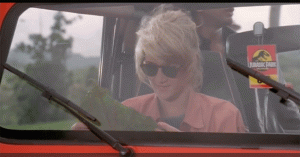Different traditions have different terms for the Life that is everything there is, in their own languages. Of course, “the Land” is English. The English term for the Land used by the Aboriginal peoples of Australia is “Country.” But all the words Indigenous people use for “the Land” or “Country” mean the same thing and refer to this enormous woven network of the seen and unseen, of relationships and the physical manifestations of relationships.
So “the Land” refers to the soil, rocks, waters, air, winds, clouds, sun, moon, stars, planets, galaxies, soil microbes, plants, animals, viruses, bacteria, fungi, wildfire, lightning, storms, and human beings. It also includes unseen things such as our Ancestors, Dreams, Visions, language, songs, and many other things, seen and also unseen. These are all our relations. The plants and animals are their own independent nations, with their own ways and customs. They are not “lower” than human beings or less wise or capable. They are our sisters and brothers, our family, our relations. Even those that the dominant culture perceives as “low” or “lowly” are absolutely capable of being wise teachers, powerful healers, leaders who can turn a tide of events. The Land is self-organized and behaves with self-determination, which both Indigenous people and philosophers of science call agency. It is agency that most powerfully stamps encounters with the Land as engaging with something that is actively, not metaphorically, alive. The individuals of each animal and plant nation also have agency, meaning they determine their own course of existence. They have memory and they also have vision. The same is true of the parts of the Land that people in Western culture do not see as alive: rivers, winds, storms, rock, mountains, fire, earth.
The Land gives us everything, and food and water is just the beginning. It is literally the source of life. Hopson and Cram (2018:7-8) tell us that Native Hawai’ian Manulani Meyer says, “Indigenous people are all about place. Land/aina, defined as ‘that which feeds,’ is the everything of our sense of love, joy and nourishment. Land is our mother. This is not a metaphor . . . Consideration of our place, our mother, is the point here. And she is more than beautiful, or not. She is your mother” (Meyer 2008: 216; italics in the original). Our bodies are made of the Land and return to the Land — just like you can see in the redrawn “linear economies” figure that starts and ends with the Land.
But all this goes well beyond the material or physical world. The Land is, and provides us with, language, art, music with song and with dance, ritual and ceremony, medicines, intuition, Dreams, Story, and Knowledge of many different kinds. Ceremony helps us communicate with the Land so we can understand how to be in better relationship, how to honor the relational accountability we owe to all our relations. Through Ceremony, we ask for Knowledge and it is given to us along with the guidelines for how it should and should not be used. The Land teaches, protects, nurtures, warns, warms, and inspires us. It also gives us a sense of welcomed belonging, and a deep joy that emerges from the sense of being home. The feeling of stepping into a Place and having it rise up around you on every side, pulsing with joy, is one that very few people of Western culture ever experience the way Indigenous people do.
But that experience is possible for people of Western culture who successfully make the paradigm shift you are trying to make. It is not easy for them to get to that point, but I have seen some people do it.
I have learned, over the years, how very hard it is for people of Western culture to understand what it means to say “the Land is alive.” There are a number of standard responses to the idea, most of which are protests meant to deny the real possibility of such a thing. Because understanding that the Land is alive is the lynchpin of the paradigm shift you are trying to make, and because so many people in Western culture cannot get past that point, I have prepared a page of the most typical “Concerns” that people raise to this idea. I have responded to each concern, to the best of my ability.
The things I have explained to you here are not enough to take you all the way through a paradigm shift about this matter of the Land being alive. To do that, you must have an opportunity for mentored experiential knowing. Perhaps, if you continue along the trajectory you’ve begun by working through this exercise, you will someday have this opportunity as you work with Indigenous people. But no matter what, you will have to switch at some point from “thinking about” the Land being alive to having experience of it. You can’t see the dinosaur until you let go of worrying about what you “know” or “don’t know” about the stuff you’ve got in your hands.

You have to set all that stuff down and simply look.
And when you do, look for the relationships.
Click here to return to the list of pages at Weaving the Basket.
Click here for list of References.
